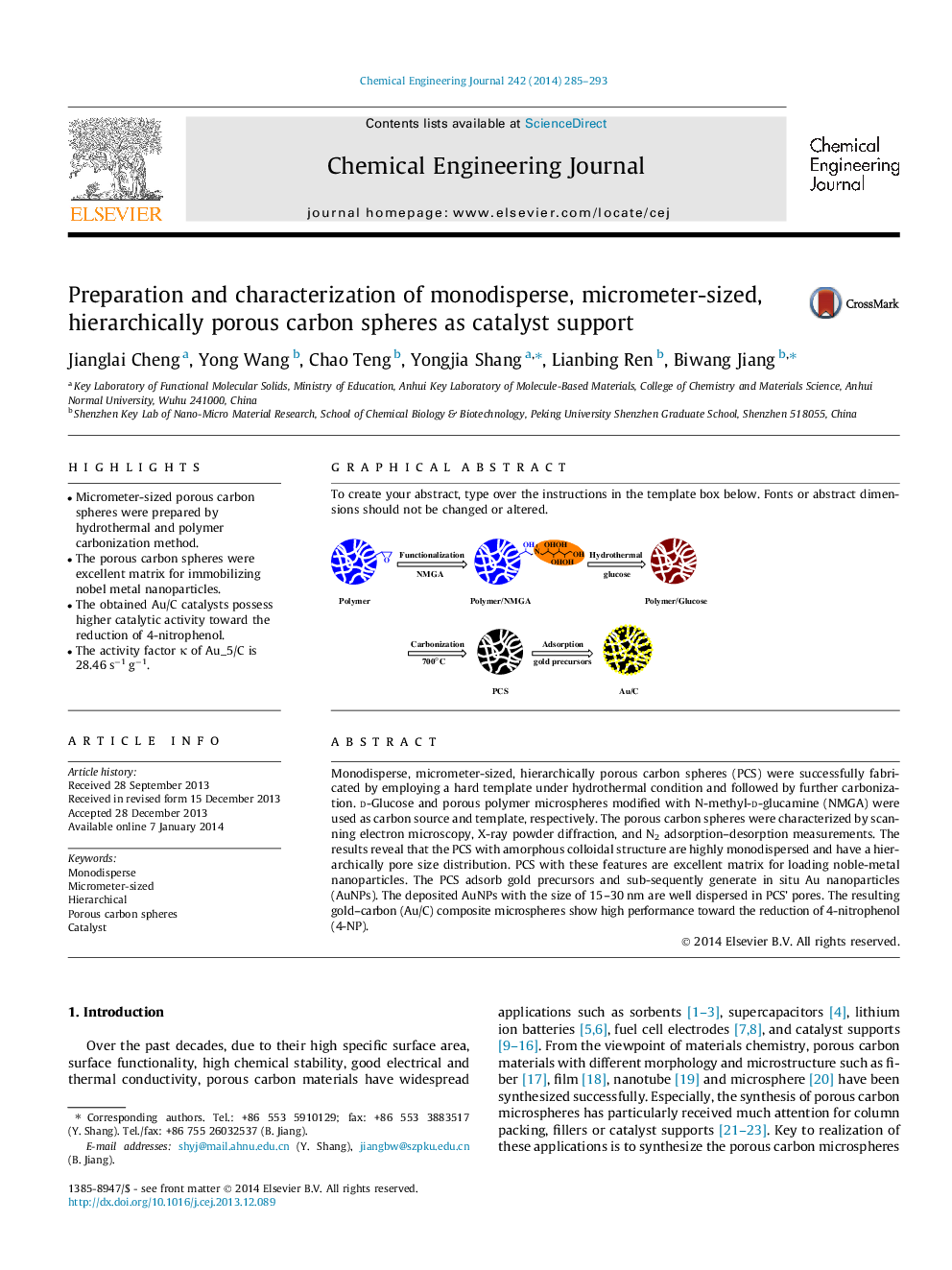| کد مقاله | کد نشریه | سال انتشار | مقاله انگلیسی | نسخه تمام متن |
|---|---|---|---|---|
| 147665 | 456397 | 2014 | 9 صفحه PDF | دانلود رایگان |
• Micrometer-sized porous carbon spheres were prepared by hydrothermal and polymer carbonization method.
• The porous carbon spheres were excellent matrix for immobilizing nobel metal nanoparticles.
• The obtained Au/C catalysts possess higher catalytic activity toward the reduction of 4-nitrophenol.
• The activity factor κ of Au_5/C is 28.46 s−1 g−1.
Monodisperse, micrometer-sized, hierarchically porous carbon spheres (PCS) were successfully fabricated by employing a hard template under hydrothermal condition and followed by further carbonization. D-Glucose and porous polymer microspheres modified with N-methyl-D-glucamine (NMGA) were used as carbon source and template, respectively. The porous carbon spheres were characterized by scanning electron microscopy, X-ray powder diffraction, and N2 adsorption–desorption measurements. The results reveal that the PCS with amorphous colloidal structure are highly monodispersed and have a hierarchically pore size distribution. PCS with these features are excellent matrix for loading noble-metal nanoparticles. The PCS adsorb gold precursors and sub-sequently generate in situ Au nanoparticles (AuNPs). The deposited AuNPs with the size of 15–30 nm are well dispersed in PCS’ pores. The resulting gold–carbon (Au/C) composite microspheres show high performance toward the reduction of 4-nitrophenol(4-NP).
To create your abstract, type over the instructions in the template box below. Fonts or abstract dimensions should not be changed or altered.Figure optionsDownload as PowerPoint slide
Journal: Chemical Engineering Journal - Volume 242, 15 April 2014, Pages 285–293
